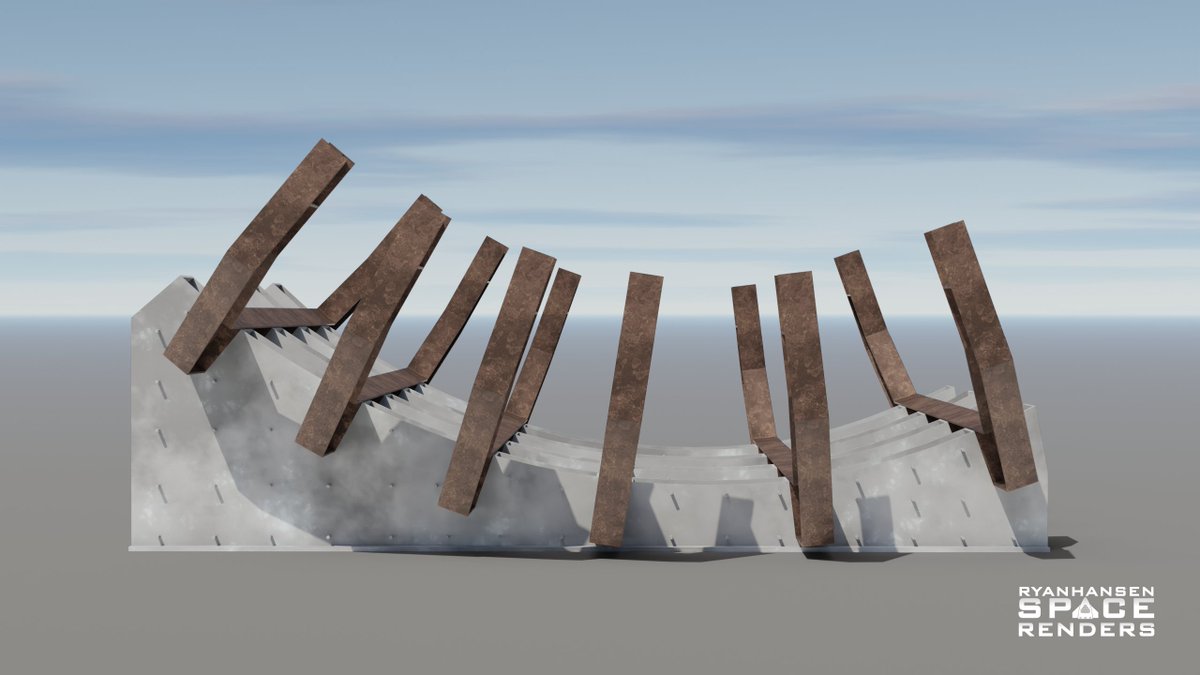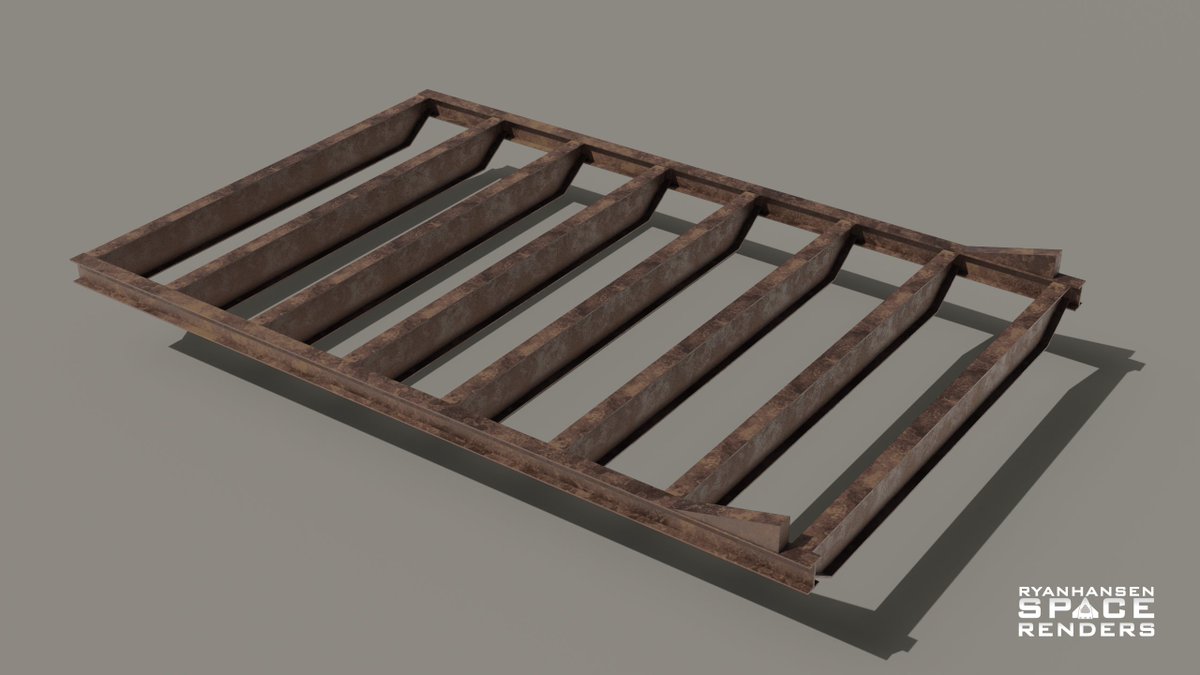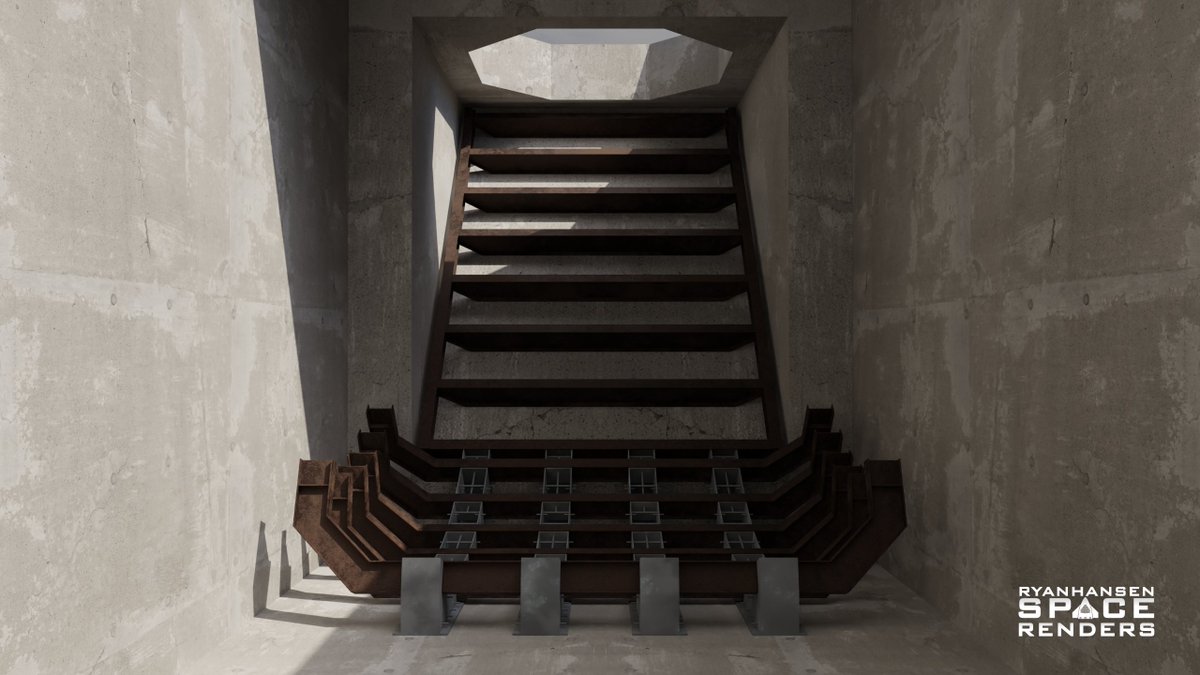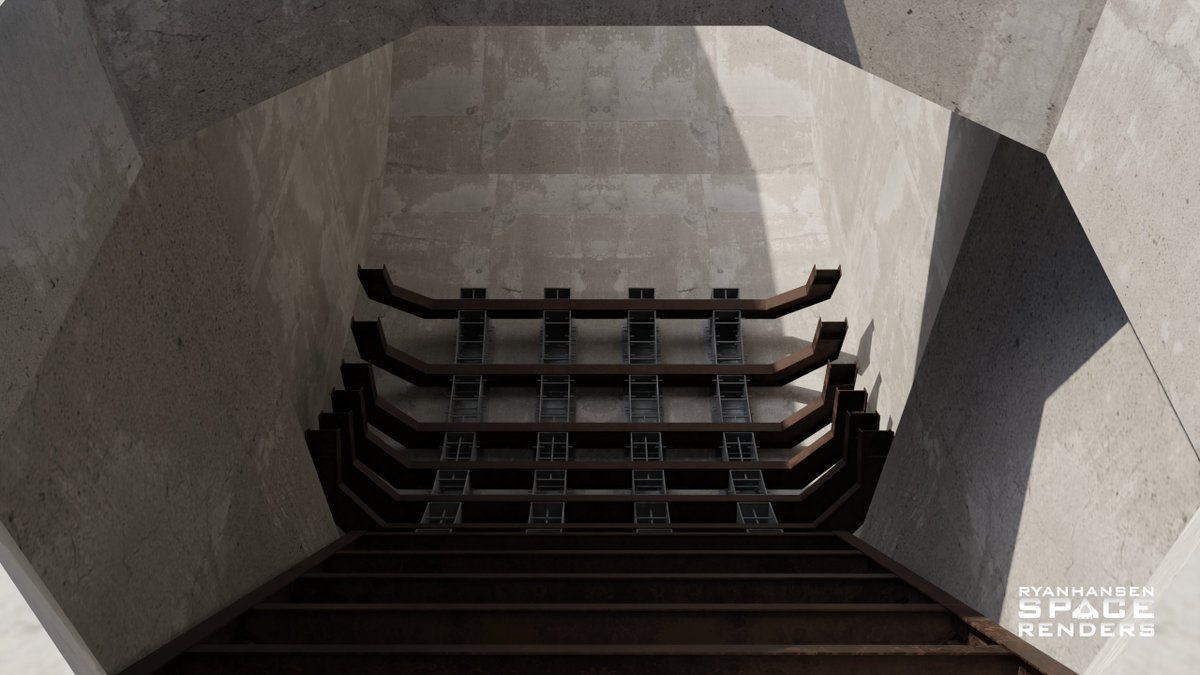Interesting parts are taking shape at #SpaceX's Masseys test site. As more work is completed on the new flame diverter, seemingly random parts start developing into recognizable assemblies. In this short thread, I'll present some ideas surrounding these new parts. As always, this is speculative and subject to change. /1

As always, I do my best to model in detail with accurate measurements from recreated camera shots. Here are my models with one of the images I used from @RGVaerialphotos's recent flyover. Consider becoming a flight supporter as things get more interesting at the Masseys site. /2 

First up is the assumed "flame bucket" part of the diverter system. This will be built using 4 pedestals with 6 slots allowing the 6 "C" shaped beams to be attached to form the frame for a curved surface with walls. /3 

The pedestals appear to be hollow and have anchoring pegs inside and out suggesting that they will be embedded in concrete and filled with concrete once assembled. /4




This truss platform has been around for weeks now. I initially thought it could be for a roof section but its width suggests that it will be narrower than the flame trench. Based on my understanding it only fits one place. More details on that next./5




This is highly speculative, but given the recent foundation for what appears to be the business end of the flame trench, it appears that these assemblies could be related and form the primary diverter frame. Once installed they could look similar to this. 6/ 

I will continue to update these models as things develop. There are still many unanswered questions and I would not be surprised if, by the next flyover, things look entirely different. Check back for updates in the near future. /7




• • •
Missing some Tweet in this thread? You can try to
force a refresh












